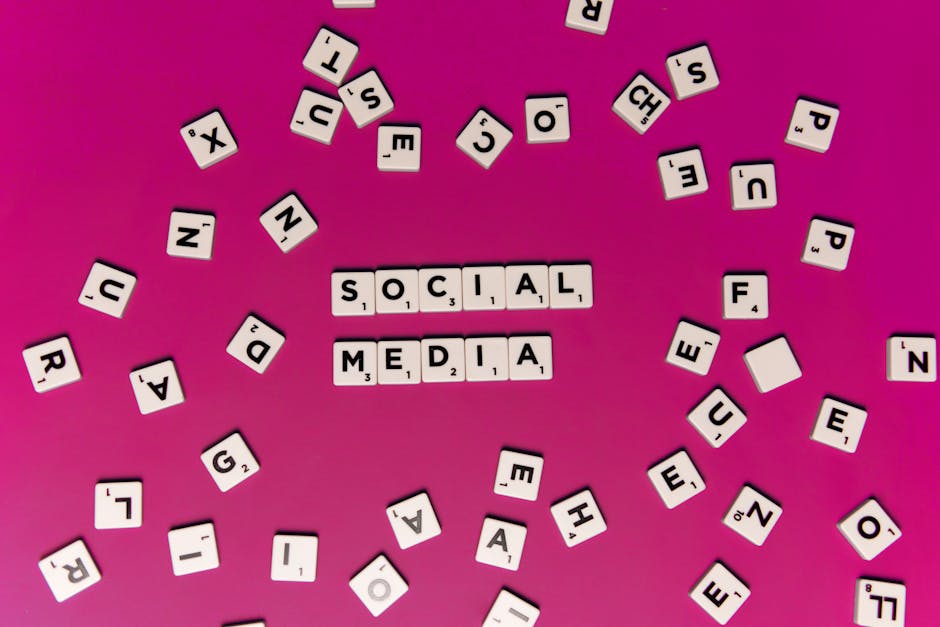Intro: Why Influencers Matter More Than Ever
The influencer economy isn’t a trend—it’s an ecosystem. Billions of dollars now flow through creators who’ve built trust and reach that marketing departments used to dream about. From niche subject-matter experts to lifestyle vloggers with millions of followers, influencers aren’t just enhancing brand messages—they’re driving them.
Consumers are shifting focus away from polished ads and hollow slogans. They want people they can relate to, not companies they don’t. In 2024, this trust gap between individuals and institutions is still widening. A solo creator in their bedroom can move product faster than a slick campaign from a Fortune 500. The difference? Connection. Audiences feel seen, heard, and spoken to.
This level of influence creates results. Not theoretical value—real business impact. Higher engagement, stronger leads, better retention. For brands willing to adapt, influencers aren’t a risk—they’re a growth channel. And for creators? The opportunity has never been bigger.
How Influencers Drive Brand Awareness
Influencers don’t just have followers—they have curated communities. That distinction matters. Audiences choose to follow influencers who match their interests, needs, or aspirations, which makes them powerful partners for creating real brand exposure.
Curated Follower Bases = Targeted Reach
Modern influencers spend years building niche communities that reflect specific lifestyles, subcultures, or interests. For brands, tapping into these audiences means skipping broad, generic outreach in favor of meaningful, direct alignment.
- Influencer followers often trust recommendations over ads
- Niche creators can connect with highly engaged, specialized audiences
- Brands see better returns by aligning with audience values and needs
Personality-Driven Content Wins Attention
What sets influencer content apart is the human element. Audiences don’t connect with polished scripts—they connect with personalities. That relatability creates space for more effective messaging that feels organic, not forced.
- Authentic voice beats corporate tone every time
- Influencer storytelling builds emotional connection
- Viewers are more likely to retain brand messages shown in real-life context
Tailored Campaigns Outperform Traditional Ads
Influencer campaigns—especially when co-developed—often outperform traditional ad methods in engagement and conversions. By customizing content to both the influencer’s style and the brand’s goals, campaigns feel true to both sides.
- Tailored messaging increases authenticity and trust
- Sponsored content can outperform display ads in CTR and recall
- Collaborative campaigns foster creativity + brand alignment
When done right, influencer-driven brand awareness isn’t just broader—it’s better targeted, better received, and better remembered.
Trust, Authenticity, and Buying Power
People don’t follow influencers for the hard sell. They follow them because they feel real. That’s the edge influencers have over brand reps—they show up in everyday context. A skincare bottle on a bathroom counter feels more trustworthy than a polished studio ad. When followers see influencers use a product in their actual routine, the pitch becomes background noise. What sticks is the person using it.
Trust is built over time through consistency, relatability, and transparency. Followers feel like they know their favorite creators. That’s a powerful bond. Influencers who talk about what doesn’t work build even more trust. No brand rep is going to say, “Skip this product, try that one instead.” Influencers do—and that honesty is golden.
Case in point: micro-influencers. With fewer followers but tighter-knit communities, they often outperform macros on engagement and ROI. A fashion brand saw a 24% sales bump after partnering with five micro creators who styled pieces across a weeklong wardrobe challenge. Compare that to the single macro influencer post that earned reach, but no noticeable lift in conversions. The takeaway? Influence isn’t about numbers—it’s about connection.
The psychology at play is simple. Word-of-mouth still wins. But now, it’s at scale. When a creator recommends something, followers process it like a recommendation from a trusted friend—not a sales pitch. That shift in perception is what gives influencers their real buying power. And it’s what makes them key players in any smart brand strategy.
Influencer Partnerships That Actually Scale
One-off influencer collaborations can get attention, but they rarely build momentum. The big shift now is toward long-term partnerships—brands are investing in influencers as ongoing ambassadors, not just momentary hype machines. Why? Because familiarity breeds trust. A creator who consistently mentions a brand over weeks or months becomes a credible part of that brand’s identity.
Consistency isn’t just about repetition—it’s about alignment. If the messaging, tone, and values stay tight across campaigns, audiences start to recognize and remember. That kind of recall translates into loyalty and, eventually, conversions.
When it comes to measurement, likes are a shallow metric. More valuable: engagement rates, click-throughs, and conversion tracking. These numbers tell the story of whether your brand is cutting through, not just showing up. Is the partnership moving people to act? That’s the scoreboard that matters.
Integrating Influencer Content Across Channels
Smart brands aren’t letting solid influencer content go to waste. Instead, they’re repurposing it—cutting TikToks into paid ads, turning Instagram Reels into newsletter snippets, and dropping UGC-style testimonials straight into product pages. This isn’t just about squeezing more out of a budget. It’s about staying consistent and keeping that authentic voice front and center where customers already engage.
When executed right, the blend of brand aesthetic and influencer voice doesn’t clash—it reinforces. It’s curated without being sterile. A solid piece of influencer content feels native but still polished enough to carry weight in an ad or promoted post. Think less corporate campaign, more trusted recommendation that meets people where they already scroll.
Beyond marketing, user-generated content adds real color to a brand’s overall strategy. Comment threads become feedback loops. How-to videos from creators evolve into support content. This layer of creator-first storytelling strengthens trust and keeps the brand close to the culture it wants to speak to.
For more on this, check out How to Leverage User-Generated Content for Engagement.
Choosing the Right Influencers
Finding an influencer with a massive following might feel like a win—but size isn’t everything. In fact, when it comes to building authentic brand connections and driving measurable results, alignment and credibility matter far more than follower count.
Prioritize Brand Fit Over Follower Count
Rather than chasing vanity metrics, today’s most successful brands focus on choosing influencers who naturally share their values, product interests, and audience demographics. A perfect brand fit will outperform sheer reach every time.
What to look for:
- Shared audience demographics and values
- Past content alignment with your industry or product category
- Strong engagement within your target market
- A history of working with similar (but not competing) brands
Vet Authenticity and Engagement Metrics
An influencer’s value isn’t measured by likes alone. It’s about who’s interacting, how often, and why. Analyze deeper engagement signals to ensure the influencer truly influences—not just posts.
Metrics to consider:
- Follower growth trends (real vs. suspicious spikes)
- Comment quality (genuine interaction vs. bots)
- Story views and swipe-up actions
- Engagement rate relative to follower count
The Rise of Micro and Nano Influencers
In 2024, micro (10K–100K followers) and nano influencers (under 10K) are becoming strategic powerhouses. Despite their smaller reach, they maintain tighter, more engaged communities that trust their voice—and take action.
Why brands are turning to smaller creators:
- Higher trust and niche credibility
- More accessible pricing for ongoing partnerships
- Stronger conversion rates in targeted campaigns
- Easier collaboration and personalized content creation
Working with the right influencers means thinking beyond numbers. Authenticity, niche alignment, and genuine community connections build the foundation for campaigns that earn both attention and action.
Measurable Impact on Brand Growth
All the reach in the world means nothing if it doesn’t move the needle. That’s why brands now care less about viral moments and more about ROI—brand lift, conversions, lead gen. Influencer campaigns need to deliver outcomes, not just impressions.
Tracking that impact isn’t rocket science, but it does require thoughtful setup. UTM parameters, affiliate links, promo codes, and platform-native insights (like Instagram’s branded content tools or TikTok’s Creator Marketplace analytics) help brands trace what’s working and what’s noise. Integrate these with broader CRM or e-commerce platforms like Shopify or HubSpot, and you get a full-funnel view: who clicked, who bought, who came back.
But here’s what’s often overlooked: influencer feedback. The best creators are more than just content engines—they’re market intelligence in real time. Their DMs and comment sections? Gold mines of honest reactions, questions, and trends. Smart brands use this feedback to refine messaging, tweak offers, and even shape product development.
ROI is no longer just a post-campaign chart. It’s a loop: create, test, listen, adapt, repeat. That’s where true brand growth starts.
Closing: Influence is a Growth Engine
Influencers aren’t just broadcast towers—they’re architects of brand identity. In 2024, the most effective creators don’t just amplify your message, they help shape it. Their audience trusts them, not just for reviews, but for perspective. That kind of equity isn’t built overnight, and it shouldn’t be treated like an ad slot.
Here’s where brands often miss the mark: they focus too much on reach, not enough on fit. It’s not about grabbing the biggest influencer—it’s about finding the one who lives your values and can tell your story without sounding like a script. This means letting creators have creative control, respecting their tone, and co-creating content instead of dictating it.
The fix? Start thinking long-term. Skip the spray-and-pray partnerships. Build actual relationships. Treat influencers like partners. Get on a call. Understand their audience. Invest in repeat collaborations. That’s how brand equity compounds. That’s how trust scales.
The takeaway: If your influencer program is based on transactions, don’t be surprised when the impact feels like a one-off. Build relationships, and your brand won’t just grow—it’ll stick.



